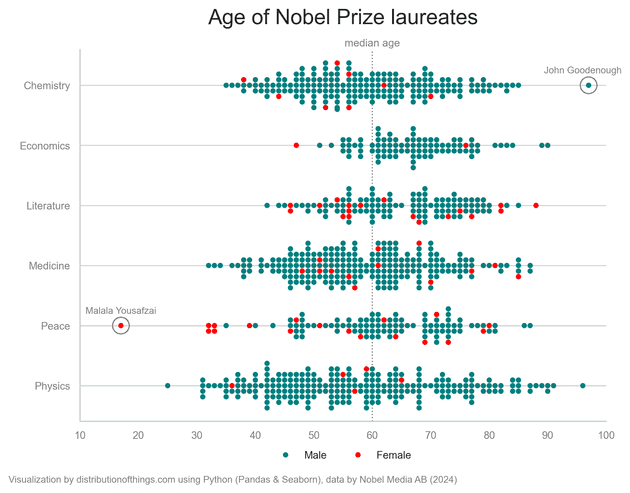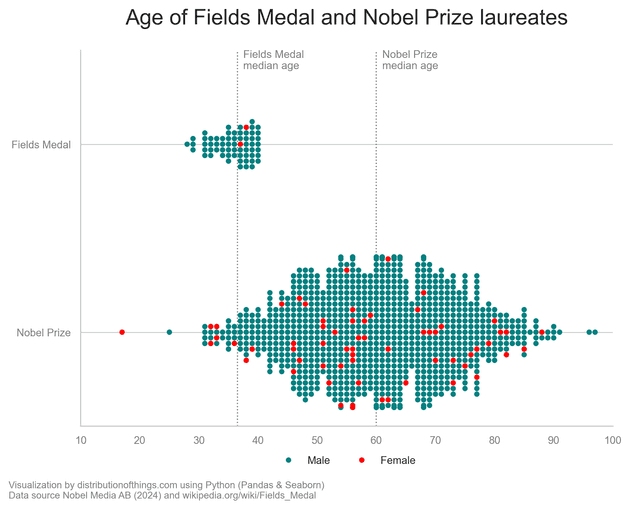This swarmplot visualizes the age distribution of Nobel Prize laureates across various categories, with a focus on gender representation. The median age of 60 suggests that Nobel recognition typically comes after a lifetime of achievements.
The youngest laureate, Malala Yousafzai, who won the Nobel Peace Prize at the age of 17, is a significant outlier. On the opposite end, John Goodenough, awarded the Nobel Prize in Chemistry at the age of 97 (indeed, he was finally deemed "good enough"!), represents the upper boundary of laureate ages.
The low representation of female laureates is striking, with notable variations between categories. Fields like Literature (15%) and Peace (17%) have relatively higher percentages of female laureates compared to STEM fields like Physics, Chemistry, and Economics, which all show less than 5% female representation. This pattern reflects a broader societal trend where women are more frequently recognized in fields traditionally perceived as "soft sciences" or areas with a cultural or humanitarian focus.
Although the Nobel Prize does not have a category for mathematics, the equally prestigious Fields Medal serves to honor mathematicians, typically those early in their careers, as it has an age limit of 40 years. Despite this focus on younger achievers, gender representation remains an issue, with only two women having ever received the award: Maryam Mirzakhani (2014) from Iran, and Maryna Viazovska (2022) from Ukraine.
Interestingly, several laureates have declined these prestigious awards. Notably, Grigori Perelman declined the Fields Medal in 2006, famously stating, "I'm not interested in money or fame; I don't want to be on display like an animal in a zoo." Similarly, in 1973, Le Duc Tho refused the Nobel Peace Prize, arguing that peace had not yet been fully realized in Vietnam despite the ceasefire agreement.
Sources:
[1] Nobel Prize dataset
[2] Fields Medal information on Wikipedia
[3] Inspiration from Flourish Visualizations


